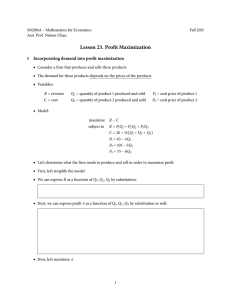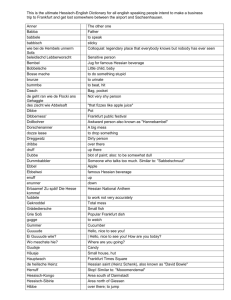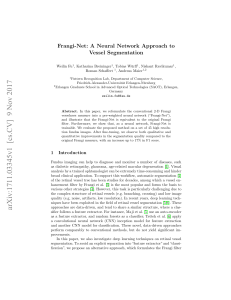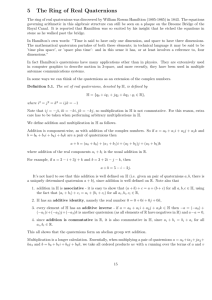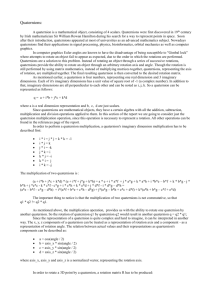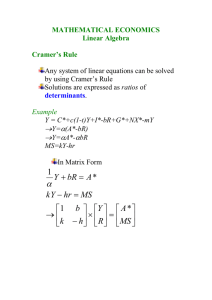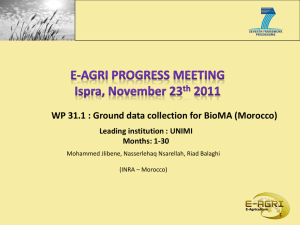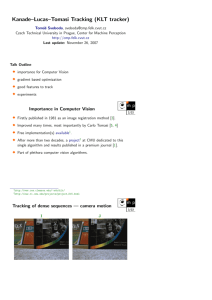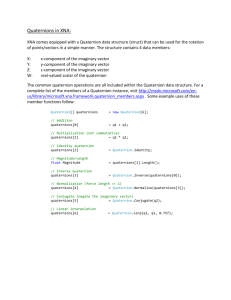Quaternion Hessian - Computing Science
advertisement
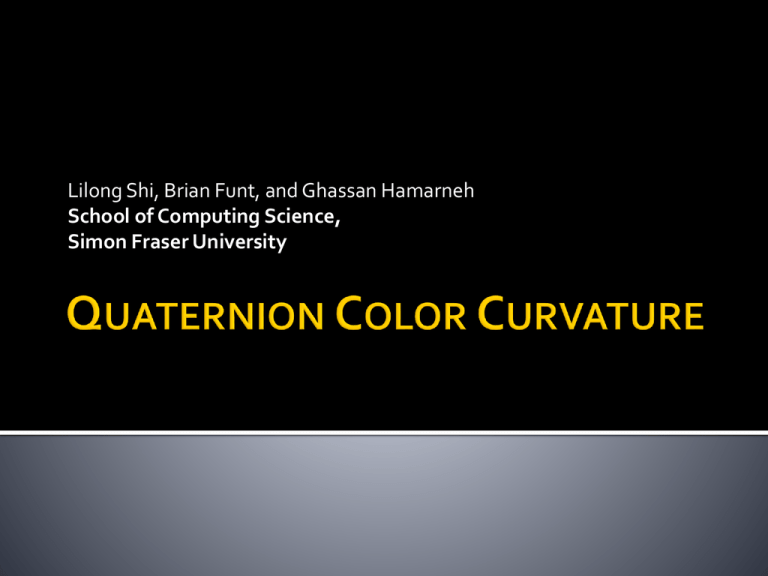
Lilong Shi, Brian Funt, and Ghassan Hamarneh School of Computing Science, Simon Fraser University Motivation 1/14 Motivation Existing detectors are grayscale-based Color increases discrimination Goals: Hessian-based color curvature Extend Frangi’s vesselness to color Problem Cancellation while converting color to gray ▪ e.g. Isoluminant images 2/14 1st, 2nd or higher orders derivatives Mostly grayscale based For color: process summed channels ▪ eg. isoluminance situation sum each individually processed channel ▪ derivatives in opposite directions cancel one other 3/14 Vessel-map as constraints for segmentation, edges, etc. Our interest is to investigate color curvature based on the Hessian operator Vessel Map Image Sources Vessel map 4/14 local shape descriptor 2nd order structure 2I 2 x H ( x, y ) 2 I yx 2 I xy 2 I 2 y eigenvectors: (e1, e2 ) eigenvalues: |1|<|2| (eigen analysis of H) Principle Curvatures 1 1 λ2 λ2 e2 e2 e1 e1 5/14 Tubular, vessel-like structures [Frangi98] Curvature measured by eigenvalue of Hessian blobness: R B | 1 | | 2 | backgroundness: S || H || 1 2 2 2 vesselness <= blobness & backgroundness For 3-channel image, 6 λ’s/e’s, in 6 directions No simple way to combine them for curvature 6/14 Quaternions extension of real and complex numbers 1 real and 3 imaginary components q a b i c j d k <R,G,B> color is represented as ▪ simple + effective Q R i G j B k Operations: arithmetic, fourier transform, eigenvalue decomposition, etc. 7/14 Q R i G j B k HQ 2Q 2 x 2 Q yx 2 Q xy 2 Q 2 y 2R 2 x 2 R yx 2 R xy i 2 R 2 y quaternion number real numbers 2G 2 x 2 G yx 2 G xy j 2 G 2 y 2B 2 x 2 B yx 2 B xy k 2 B 2 y 8/14 Quaternion-valued Hessian matrix HQ HQ 2R 2 x 2 R yx 2 R xy i 2 R 2 y 2G 2 x 2 G yx 2 G xy j 2 G 2 y 2B 2 x 2 B yx 2 B xy k 2 B 2 y Apply QSVD to HQ H Q V Q U Q T non-negative singular values 1 and 2 UQ contains quaternion basis vectors 9/14 1 and 2: 2 eigen-values instead of 6 for principle curvatures of color tubular structure Can therefore be used the same way for blobness and backgroundness measure Vessel map for color image separability of vessel structures from background vessel segmentation and enhancement detection of tubular structures 10/14 Test on photomicrographs, nature photos, and satellite images Input Image Frangi’s grayscale Quaternion Hessian 11/14 Test on photomicrographs, nature photos, and satellite images Input Image Frangi’s grayscale Quaternion Hessian 12/14 Test on photomicrographs, nature photos, and satellite images Input Image Frangi’s grayscale Quaternion Hessian 13/14 Summary Extended Frangi’s method from scalar to color ▪ Overcomes ▪ Cancellation problem, ▪ *Isoluminance Used Quaternions for color representation Prevented info loss. Increased discrimination Future work 3D/4D vector-valued image/volumetric data Feature points/blob detector in color 14/14 ?
